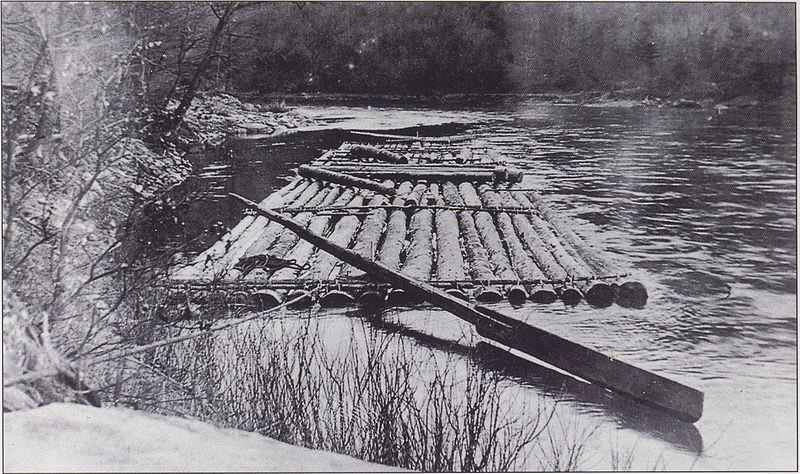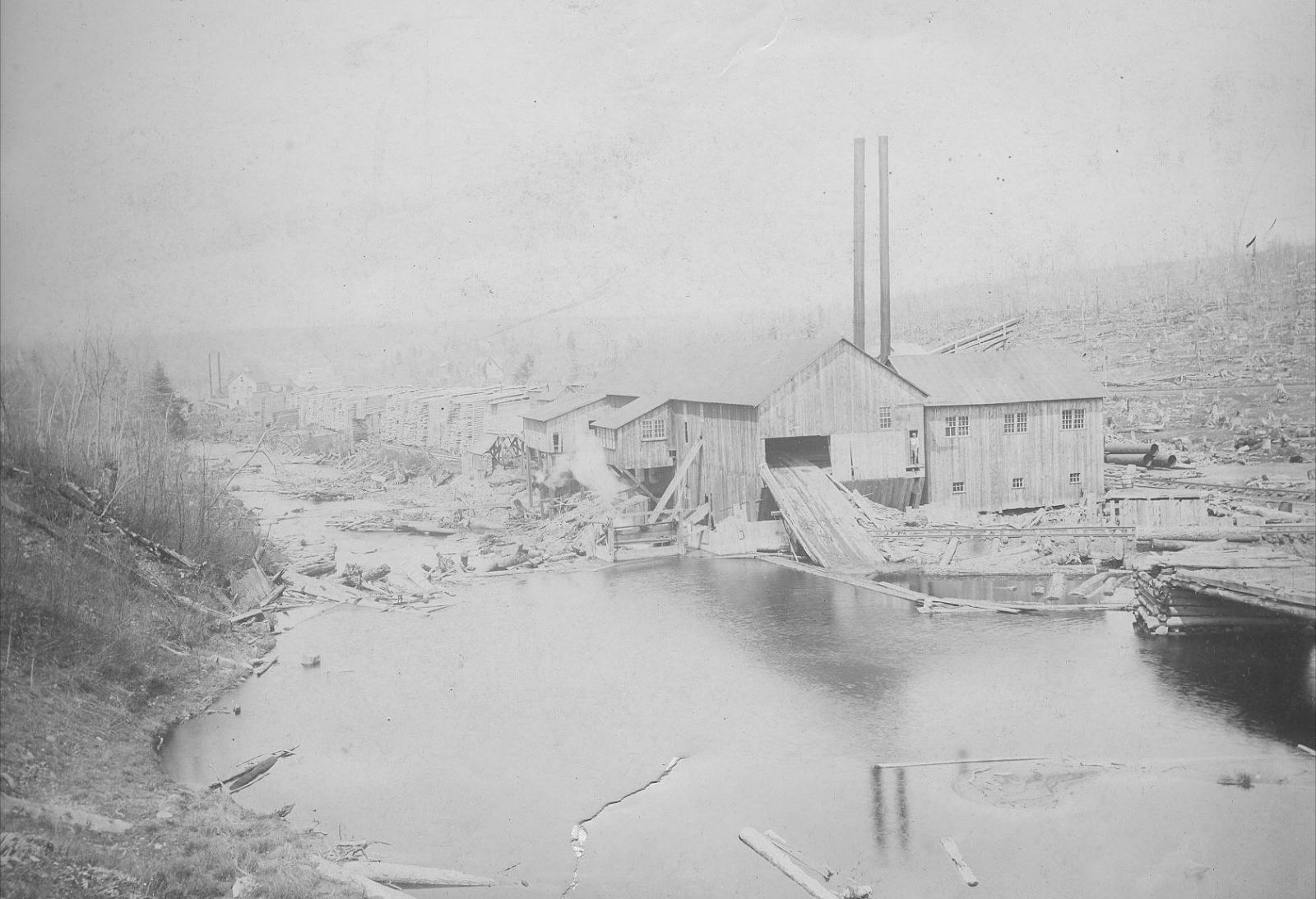–Change in the waters–
–Change in the waters–
The natural river corridors, such as the North and West Branches of the Susquehanna, the Allegheny, the Tioga, and the Cowanesque, were major avenues of transportation for both settlement and the burgeoning timber trade in the region.
River tributaries, mostly creeks, played a significant role in moving timber to mill and market. Artificial corridors, like the West Branch Canal and the Bald Eagle Cross‐Cut Canal, were developed in the region to support the lumber industry. The expansion of sawmills along waterways fostered the penetration of the early lumber industry into remote areas of the region.
Splash dams were often constructed to help maintain and control water levels in tributaries to allow for larger or additional log drives.
As logging continued, booms were constructed along rivers (log booms acted like fences in the rivers, holding back the logs while allowing water to pass through). The Susquehanna Boom is what contributed to Williamsport holding the title of Lumber Capital of the World for decades.

Spar timber, square timbering, dimension lumber and timber rafting were all key components of the early lumber industry that reached national markets on the east coast and New Orleans. Local customs and traditions arose from the logging and lumber industry. Pennsylvania spar timber supported maritime travel and trade, railroading and coal mining.
During peaks in the log drive and rafting season (primarily springtime when water levels rose from rain and snow melt) some places within the Lumber Heritage Region could have seen as many as 1,000 rafts and arks float by per day.
